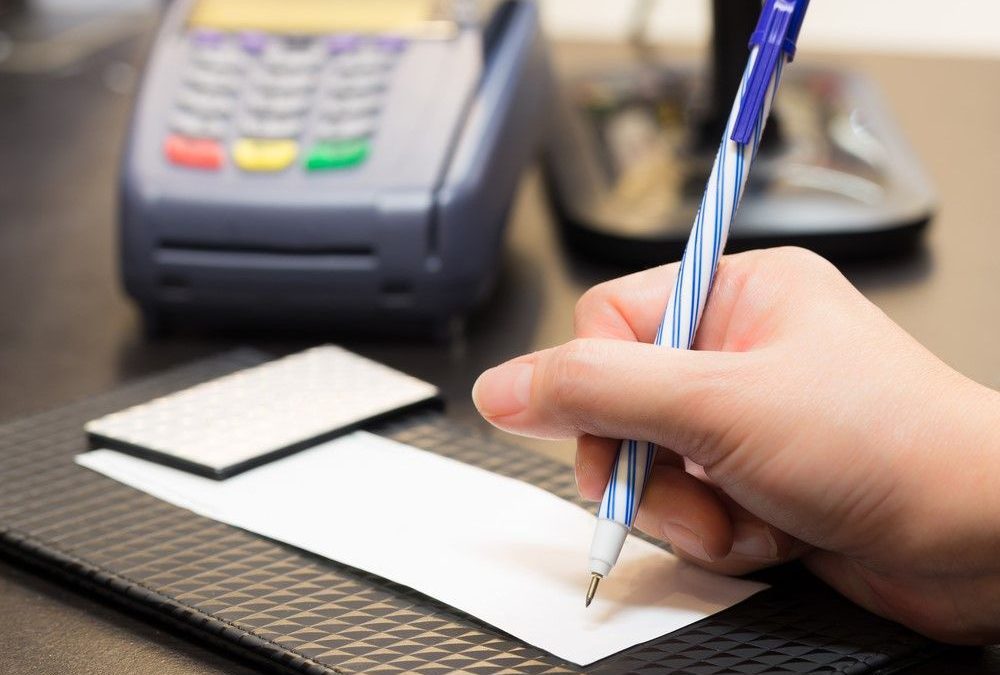If you’re still asking for signatures to complete credit card transactions, you may be getting strange looks from an increasing number of customers. That’s because signatures are no longer required from the major credit card processing companies for EMV chip card transactions, so most businesses have stopped asking for them.
This change all started back in October of 2017, when Mastercard announced that beginning in April 2018, it would no longer require signatures at checkout for purchases in the United States and Canada using the brand’s EMV debit and credit cards. Other card brands followed suit.
So the memories of bottlenecks at your countertop or wireless credit card terminal during checkout as customers fumbled for a pen are fading into the past. If your business is still requiring signatures for payment processing, following are reasons you should take measures to stop the practice.
Signatures for Payment Processing Never Provided Much Protection
Flaws in the signature system for credit cards were always present. Some reasons why signatures offered little protection for consumers include:
- Many people’s signatures are not legible, particularly when they are scrawled in a hurry
- Signatures can be forged
- Many cashiers would fail to check signatures even when cards were handed over
- Customers who wrote “see ID” on their cards unwittingly invalidated the cards and lost protection for themselves
Plus, for businesses selling goods or services online or over the phone, a signature provided zero protection against fraud. The introduction of EMV chip card technology is a much more effective security option for most businesses.
All Major Credit Card Companies Have Ditched Signatures
Following Mastercard’s lead, Discover, American Express, and Visa all followed suit, saying there is no signature requirement to process payments on their EMV debit and credit cards as of April 2018. However, signatures are still required for older cards that don’t have an EMV chip, as well as transactions at terminals that don’t have an EMV chip reader.
Merchants can still ask for a signature on EMV transactions if they want, but they are no longer burdened with the expense of storing and sending signatures back to the issuer. This signature-free retail world means time can be saved at the checkout lines.
If you’re still requiring a signature from customers, consider these disadvantages:
- If you haven’t upgraded to EMV-compliant credit card terminals and thus need to require signatures, customers may feel their payments are less secure.
- Your checkout could be slower than at your competitors.
- Customer frustration over security concerns or slower checkout could cause them to shop elsewhere.
- Compared to other businesses, yours could seem out of touch.
If you really want to offer protection to customers and your business, adopting EMV chip credit card acceptance is the best way to go.
How to Stay Protected in a Signature-Less Era
You shouldn’t worry about security when you drop the signature requirement at checkout. Here’s how tokenization and EMV chip technology provides more security than signatures:
- During every transaction with an EMV chip card, a unique code is generated. Unlike a thief replicating magnetic stripes, this unique code is not replicable or usable in the future. This makes duplicating a chip card to use for purchases impossible.
- Unlike a magnetic stripe, which transfers card information to the card reader, the chip card and the card reader interact to glean information. This prevents sensitive information such as card number and expiration date from being sent to the card reader and being used to create counterfeit cards.
- Other than dipping the EMV chip card into the countertop or wireless credit card terminal, the cardholder retains full control of the card. This means any data from the stripe is not stored with the business, and thus is not vulnerable to hackers and thieves.
Visa reports counterfeit fraud has decreased 70 percent since October 2015, when chip cards were introduced. EMV chip card technology has already been widely adopted throughout most of the developed world, with the United States being one of the last developed countries to embrace it. With decreases in fraud, chip card popularity is only expected to increase among customers and merchants.
The Future of Credit Card Security
Where will credit card security go from here? Unlike signatures that can be reproduced easily, expect fingerprint, voice, and facial recognition to be new trends in credit card security. The major credit card companies have already expressed interest in using biometrics to develop even safer payments.
Businesses that want an extra layer of security should work with a merchant services provider that follows all PCI compliance regulations in its security practices. Customers should regularly monitor their credit reports and keep an eye out for any suspicious changes.
Want Enhanced Payment Security for Your Business?
If you’re looking for a merchant services provider that offers both convenience and the utmost in security, check out Payment Solution Pros. Customers will appreciate that you have taken steps to protect their data and their time. Contact us for a free consultation.

